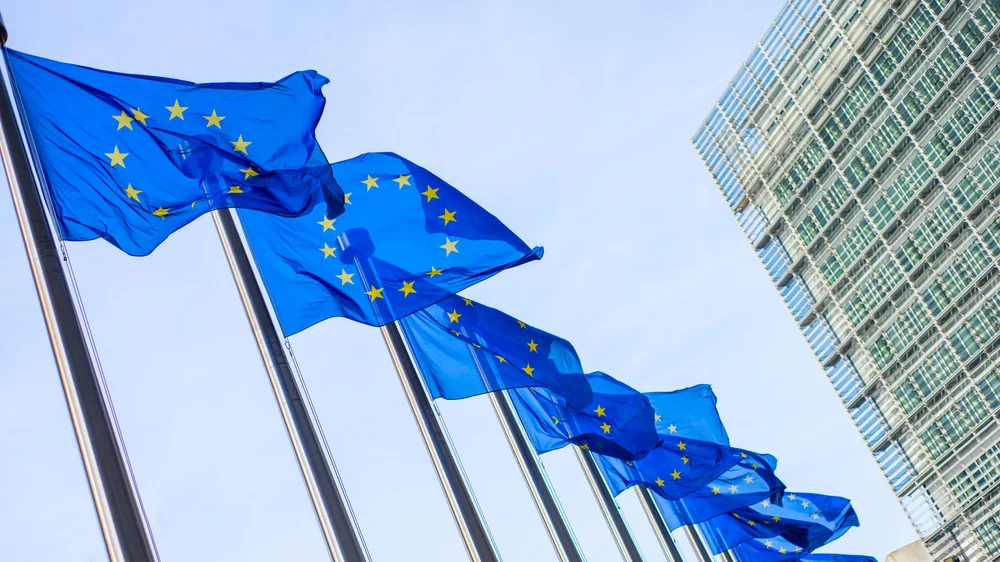
Full Business Expensing Is the Key to Growth
Making full business expensing permanent is one of the most powerful and empirically grounded tools available to policymakers seeking to raise investment, productivity, and wages.
In my new paper, recently released in the NBER Working Papers Series, co-authored with White House National Economic Council Director Kevin Hassett and Hoover Senior Fellow Joshua Rauh, we analyzed the investment impact of the 2017 Tax Cuts and Jobs Act’s (TCJA) temporary full expensing provision. By exploiting detailed firm-level data and variation in the user cost of capital across firms, we found that a one percentage point reduction in the user cost leads to a three-percentage point increase in investment.
In layman’s terms, it means that lowering the corporate tax rate or speeding up expensing periods for capital expenditures increases capital investment more than previously thought. This number is larger than those used by the Congressional Budget Office (CBO) to score bills. The implication is clear: allowing businesses to immediately deduct the full cost of capital investment — rather than depreciating it over many years — substantially incentivizes investment in property, plant, and equipment, and unleashes real economic activity.
The economic logic is straightforward. Full expensing reduces the after-tax cost of new capital, especially for machinery, equipment, and software. Eliminating the tax penalty on capital formation aligns the tax system more closely with economically efficient investment incentives. Instead of requiring firms to depreciate investments over arbitrary timelines, expensing allows businesses to recover costs immediately, freeing up cash flow, simplifying the tax code, and encouraging expansion.
But temporary expensing, as enacted in the TCJA, only partially unlocks these benefits. Firms hesitate to invest when policy is uncertain or set to expire, and the front-loaded nature of temporary expensing creates an artificial incentive to shift the timing of investment rather than increase its level. Making the policy permanent is essential to maximizing its impact. Permanence provides certainty and predictability, enabling long-term planning, multi-year investment projects, and a more stable business environment.
That’s why Senate Republicans’ inclusion of permanent full expensing in their version of the OBBB bill is such a critical step. It reflects a growing recognition that the U.S. tax system should support, rather than penalize, investment and productivity-enhancing activities. This is not merely a theoretical point: the empirical data from the TCJA years clearly show a sharp increase in capital expenditures following the implementation of full expensing, especially in sectors most sensitive to changes in the cost of capital.
Moreover, the broader macroeconomic rationale is compelling. By boosting investment, full expensing increases the capital stock and worker productivity, ultimately translating into higher wages. Over time, this drives improvements in real incomes and living standards. It also enhances the international competitiveness of U.S. firms, particularly at a moment of heightened global economic rivalry. In an era where strategic industries and supply chain resilience have become national priorities, incentivizing domestic investment should be a bipartisan goal.
Critics of the OBBB bill have highlighted its broader fiscal cost and distributional consequences, particularly the cuts to Medicaid and other safety net programs. These concerns are serious and deserve a thorough debate. But the expensing provision itself is not the problem — it’s one of the few elements of the bill that is firmly grounded in empirical research and demonstrably pro-growth. It encourages real economic activity rather than simply transferring income across groups or generations.
Indeed, some critiques of expensing overlook its proper functioning. It’s not a tax loophole or special interest subsidy. Rather, it’s a move toward a more neutral, consumption-based tax system. In a perfectly neutral system, all investment would be expensed, and all consumption taxed — a structure many economists have long favored. Expensing also removes the tax code’s current bias in favor of debt financing over equity, making corporate balance sheets more resilient.
Deficit concerns are not trivial, but they must be weighed against the long-term economic gains. Dynamic scoring models, which incorporate the feedback effects of stronger investment and growth, suggest that permanent expensing could offset some of its fiscal cost. It is undoubtedly more likely to generate productive returns than across-the-board rate cuts, which tend to have smaller pro-growth effects. Full expensing supports capital formation over the long run, with effects that compound over time.
Another vital consideration is simplification. The U.S. tax code’s complex depreciation schedules are burdensome for firms, especially small and medium-sized businesses. Full expensing simplifies tax compliance, reduces administrative costs, and improves transparency. It replaces arbitrary asset-class lives and IRS tables with a clear, economically rational rule: deduct the full cost of business investment in the year it occurs. That simplicity has real value, particularly for firms without armies of tax accountants.
From a policy design perspective, expensing also avoids many of the distortions that plague other tax provisions. Because it doesn’t favor one sector over another, it leaves firms free to invest based on economic fundamentals rather than tax arbitrage. It supports everything from manufacturing equipment to software development, enabling a wide range of industries to grow and adapt to technological change.
Making full expensing permanent would also strengthen American economic resilience. Investment is often one of the first casualties in a downturn, and one of the slowest areas to recover. By making the tax code consistently more supportive of investment, a permanent expensing regime could help smooth economic cycles and strengthen the economy’s supply side, especially in times of uncertainty.
Finally, full expensing has a track record of bipartisan interest. Prominent economists on both sides of the aisle — including some in the Obama administration (the Obama administration in 2012 supported lowering the corporate tax rate to 28% from 35%)— have endorsed the idea as part of broader business tax reform, including reducing the corporate tax rate. It was a central pillar of the TCJA’s approach to pro-growth tax policy, and one of the provisions with the clearest positive effects. As Congress debates how to balance pro-growth policies with fiscal responsibility, expensing should be seen as an anchor of sound tax design, not a bargaining chip to be traded away.
In sum, making full business expensing permanent is one of the most powerful and empirically grounded tools available to policymakers seeking to raise investment, productivity, and wages. The evidence is clear: when the cost of capital falls, firms invest more, and the benefits of this investment ripple through the broader economy. Permanent full expensing stands out as a principled, high-impact reform that could deliver lasting gains. Congress should not miss this opportunity.
Jon Hartley is currently a research fellow at the Civitas Institute, a policy fellow at the Hoover Institution, a senior fellow at the Foundation for Research on Equal Opportunity, a senior fellow at the Macdonald-Laurier Institute, and an affiliated scholar at the Mercatus Center. He also hosts the podcast Capitalism and Freedom in the 21st Century.
Economic Dynamism

The Causal Effect of News on Inflation Expectations
This paper studies the response of household inflation expectations to television news coverage of inflation.
.avif)
The Rise of Inflation Targeting
This paper discusses the interactions between politics and economic ideas leading to the adoption of inflation targeting in the United States.

Why Can't the Middle Class Invest Like Mitt Romney?
Why can’t middle-income Americans pay effectively no taxes on investments like the wealthy do?

The Revenge of the Supply-Siders
Trump would do well to heed his supply-side advisers again and avoid the populist Keynesian shortcuts of stimulus checks or easy money.



.jpg)




.jpg)







